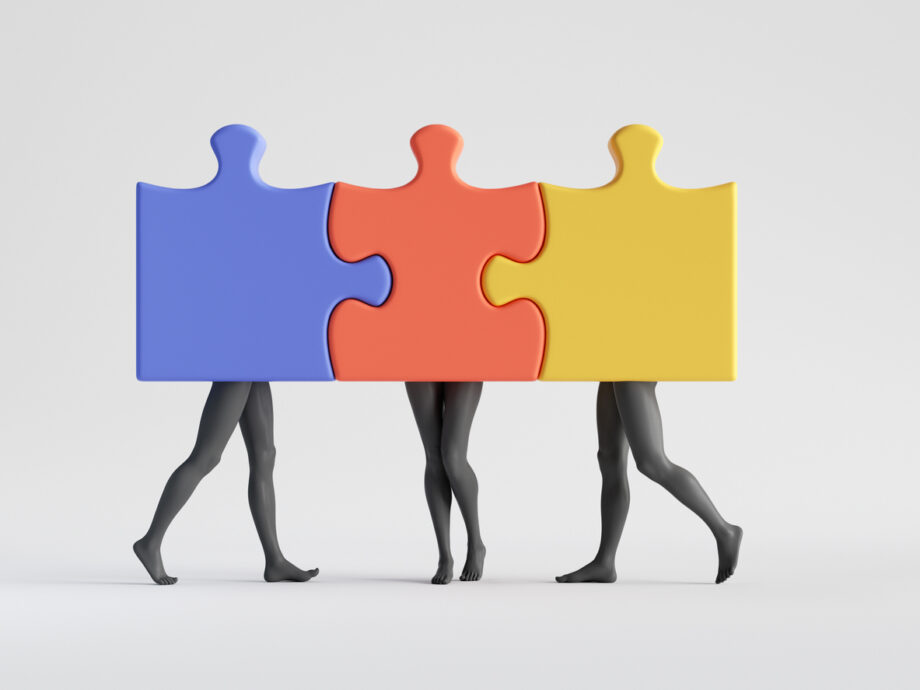Can love have a perfect form? Is there some kind of platonic ideal of affection that should be the standard of sex and relationships? If you’re monogamous, especially when it has its foundations in culture or religion, that answer is pretty often concrete and unshakeable.
But what if you are part of the group that embraces the idea of having intimate/sexual relationships with more than one person at a time?
Ethically non-monogamous (ENM) relationship dynamics -- which can include, but are not limited to, polyamory, swinging and open relationships -- are and have been the norm across various cultures and time periods. This is important to note: Often, monogamy is touted like it is the standard for relationships across the globe and through all of human history -- when, in fact, it is not. Those practicing, or experimenting with, poly/ENM dynamics today can can learn and take inspiration from cultures and time periods where these types of relationships have been the norm.
READ: Ethical Non Monogamy and Trust: How to Make it Work.
Engaging with multiple sexual partners at the same time is normal -- but that doesn't mean it's always easy. When things get tricky -- and it will always be tricky at some point -- with polyamory, it can be easy to think that somehow you, or the people you are involved with, messed up. That it should be this way or that way, and then things will be all hunky and/or dory.
The fact is, just as there really isn’t a perfect form for anything, there never is (or could be) an ideal shape for a non-monogamous relationship. That’s not a bad thing. Far from it. In fact, that’s what is often so beautiful about being poly: It’s up to those involved to give it life and, most of all, happiness. The answer is, to put it really simply, "whatever works."
That said, it can be reassuring to learn of a few unique and fascinating forms non-monogamy can take. Do any of these relationship styles get your creative relationship juices flowing?
Maybe you’ll be inspired to try one, or all, of them yourself with your partners. If they work, then fantastic. If not, there’s a universe of possibilities yet to explore.
Read: Your Top 10 Questions About Polyamory - Answered
Communication for Non-Monogamous Relationships
Before we get to our list, let’s talk about communication.
READ: The Shy Person’s Guide to Talking About Sex.
You’ve probably heard about this more than a few times, but it’s always worth repeating. With non-monogamy, being open and honest with your feelings with those you are involved with can be crucial to maintaining any relationship -- especially when it involves more than one relationship.
This also means listening, as well as talking, to everyone involved. A one-way line of communication is not really communication: It’s talking at and not with someone (or someones). It’s also extremely important to communicate with yourself. Being poly can take a lot of self-discovery and growth and avoiding your issues or, worse, taking them out on your partners is an all-but-guaranteed way to shatter the trust that is so essential to being polyamorous.
So talk, listen, learn about yourself and (tying this all up with a neat little bow) be prepared to step back, to take a break and to embrace change.
Now, let's dive into four types of polyamory:
1. Relationship Anarchy
Not so much a style or a shape, but its own unique species, relationship anarchy can best be described as love free of concrete definition.
Someone who is a relationship anarchist might look at their connections to other people not by labels like "primary," "secondary," "partner," or even "friend" -- but by seeing them as their own unique flavor of love or sex.
Where other people might look at their poly relationships like a web, a relationship anarchist may not see a structure but rather a shifting and changing galaxy of people. Some coming, some going, and some getting more or less intimate as time goes on.
2. Pancake Poly
This is a playful term of my own. It means a non-monogamous relationship where everyone involved shares common activities or even live together. It's like having pancakes in the morning. The thing is, being "pancake poly" isn’t for everyone. Many don’t feel comfortable with this level of intimacy with others.
READ: You've Heard of Polyamory, but What About Ambiamory?
For example, having pancakes with the partner-of-my-partner may be fine, but having them with the partner-of-my-partner’s-partner (we really have to get a better poly vocabulary) may be too much to handle.
3. With Whips and Chains
Being in a BDSM form of poly brings its own benefits as well as potential drawbacks.The big plus for many is a clear, and even contractual, structure to it all. (That is, after listening clearly to the submissive’s concerns and needs, the Dominant spells out the form of the open relationship.)
The downside here can be if the submissive’s role gets in the way of expressing their needs and concerns. Because of this, it’s always a good idea for everyone involved to drop the roles and, instead, talk to each other as who they are as individuals. And, of course, always be willing to change anything and everything when needed.
4. Unbalanced Poly
If pancake poly is about a cohesive group of people, and relationship anarchy is the opposite, then what could be called "unbalanced poly" is somewhere between the two. By unbalanced, I don’t mean in an emotional way. Rather, this is when two people in a poly group might have a very different relationship than with the others involved.
This could be a situation with a couple who also have outside lovers or a core group of three or more who also have other relationships. These differences could be just about anything, ranging from legal marriage, a house, children or even to BDSM styles like cuckolding.
READ: Down to Cuck: What You Need to Know About Cuckolding.
The idea, in the end, is that it’s perfectly okay for a poly relationship to be strong one way and casual another. Remember: Whatever works.
All for One, One for All
Hopefully, you’re beginning to see that poly isn’t an ideal -- but rather a changing, evolving thing. There really can’t be a manual to craft the "perfect" non-monogamous structure, as the basic building blocks are wonderfully imperfect human beings.
Resorting to a nautical example, when you’re in a poly situation and things are creaking and groaning, you’re taking on water, and emotional drowning is imminent, don’t give up the ship. Think about trying a new boat.
And try not to forget that the goal of any relationship, including those with more than two people, is the purest and most beautiful thing there is: That you and the people you love are happy.




